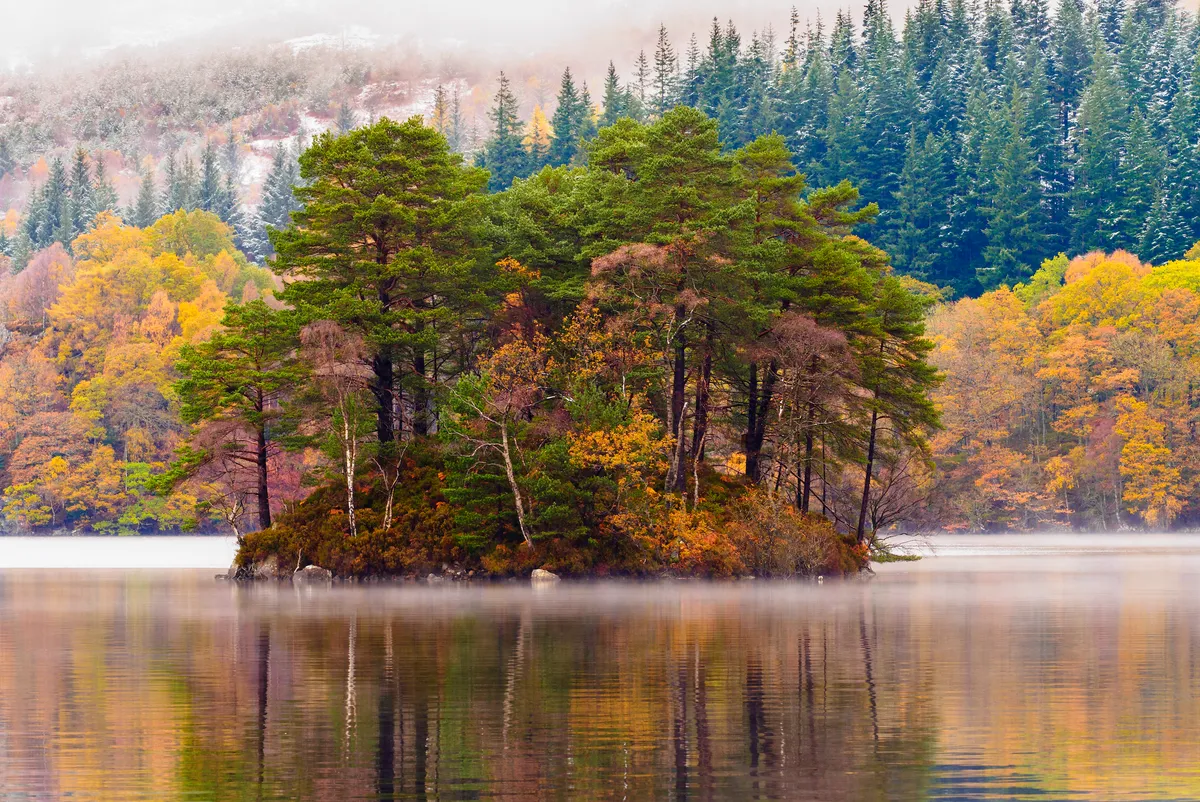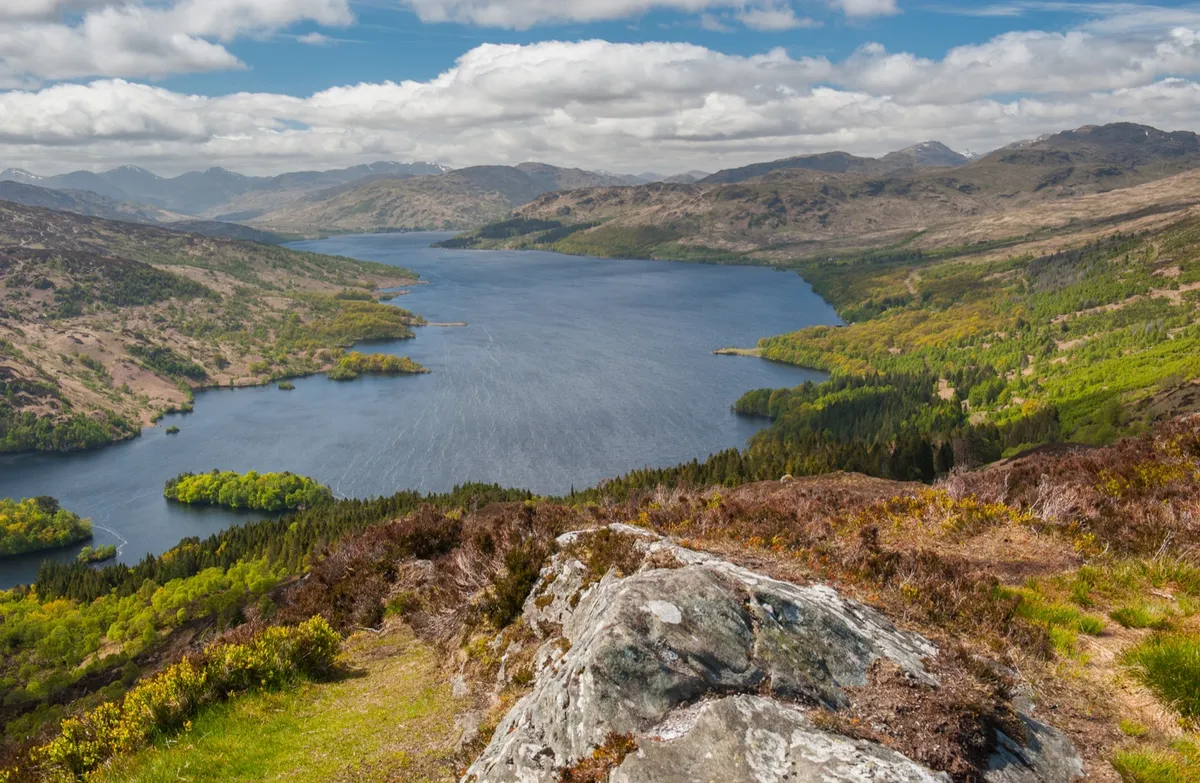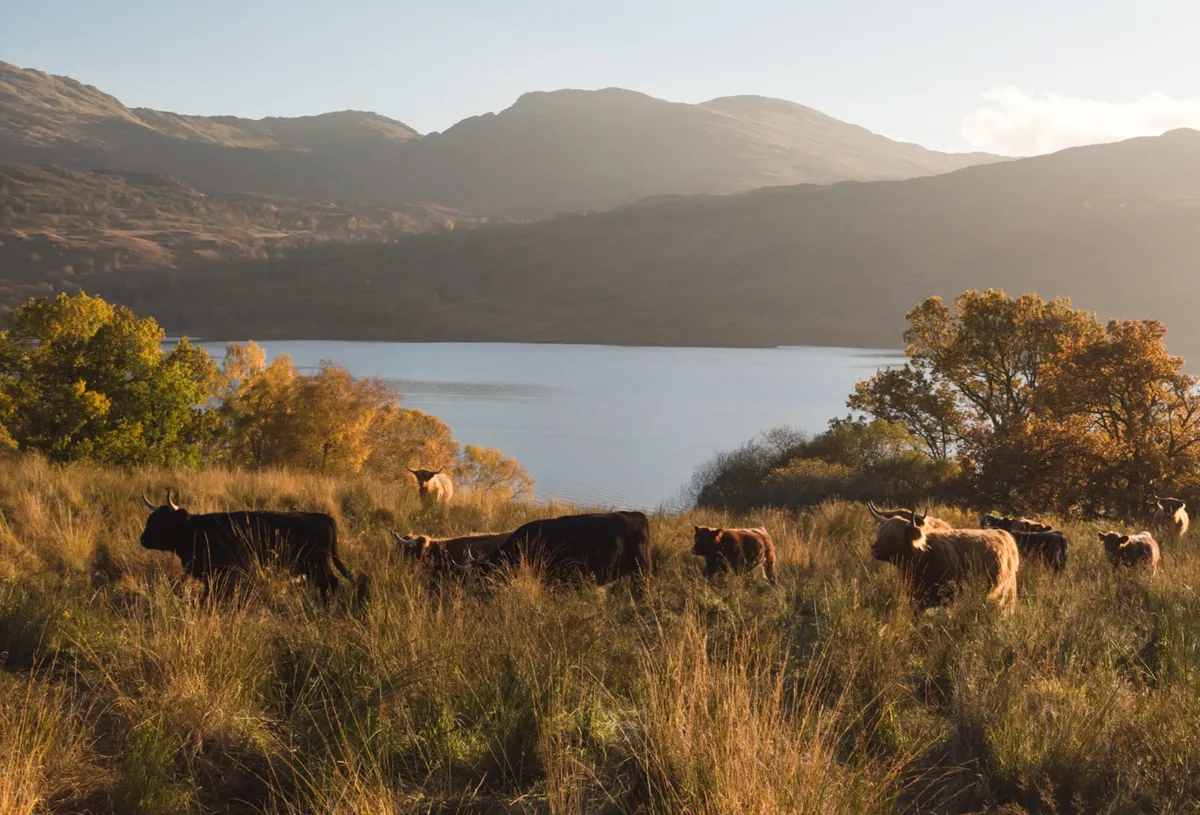Loch Katrine is a large freshwater loch in the Highland region of Scotland. The eight-mile long waterbody has wooed artists and poets for centuries – the Wordsworths and Coleridge, to name a few. And for good reason: extending through miles of remote Scottish country and overlooked by craggy hills at its southern end, it’s a place of great beauty.
You can experience Loch Katrine in the beautiful Loch Lomond and the Trossachs National Park with a cruise on board the Sir Walter Scott Steamship, but for those with a bit more energy, a tranquil five-mile walk runs along the eastern shoreline. It's the perfect way to spend a morning or afternoon, no matter what the weather.

Art of Loch Katrine
Charlotte Nasmyth (1804-1884), the sixth daughter of the Scottish landscape painter Alexander Nasmyth, was brought here as a child from her Edinburgh home, instilling in her a love of the richly wooded scenery. Like all of her sisters and, notably, her eldest brother Patrick, she was trained to draw and paint by her father in the Romantic style of the day.
Little has changed along the shores of Loch Katrine since Charlotte’s day, and one can still revel in the expansive scenes so warmly depicted in her strong oil paintings. The Entrance to Loch Katrine, one of Nasmyth’s most famous paintings, depicts a stocky figure adorned in Highland plaid walking towards the foot of the loch. He seems benign and perfectly at ease on the warm summer evening. Will you pass him as you leave the bustle of the Trossachs Pier and follow the shoreline west opposite the crags of lofty Ben Venue?

Loch Katrine walk
2.6 miles/4.2km | 1.5 hours | easy (one way)
1. 19th-century steps
Leave the parking area beside the pier and set out on a level, singletrack road on the northern shores of the loch. After half a mile, by waterworks, you enter Nasmyth’s painting, side by side with the lone figure, staff in hand, as it follows the dappled light along the shore. Perhaps you may see, or imagine, a couple of white-sailed boats on the placid waters.
2. Pass of the Cattle
On the far side of the loch lie the steep, rambling cliffs of Coire na Uruisgean, depicted on the left-hand side of Nasymth’s work. According to Scottish folklore, this boulder-packed hollow, running right down to the water’s edge, was once home to urisks. Half human and half goat, these water-haunting creatures were known for helping farmers tend to their fields.

An ancient route runs above the hollow, the Bealach nam Bo (Pass of the Cattle). Cattle-rustling caterans, romanticised by many, would have known it intimately. For these Scottish robbers, the Trossachs offered a perfect launch pad for raids into the adjacent, fertile and prosperous Lowlands. Loch Katrine, a favoured bolt hole for the caterans as they drove their live booty over the bealach back to their rugged fastness, may well have been named after them.
3. Exploring deeper
As you walk on, there is a sense that you are delving into the painting’s backdrop. Mountains loom and rowan, silver birch and oak overhang the path and loch shore. In late summer, the lower slopes are covered in lime green bracken, while higher up, purple bilberry – or blueberries, as they’re also called in Scotland – thrive. The pier below Brenachoile Lodge is an excellent vantage point. The far end of the loch, where legendary Rob Roy was born, lies tantalisingly out of view. Rest, before walking back through the frame.
Loch Katrine map
Loch Katrine walking route and map
